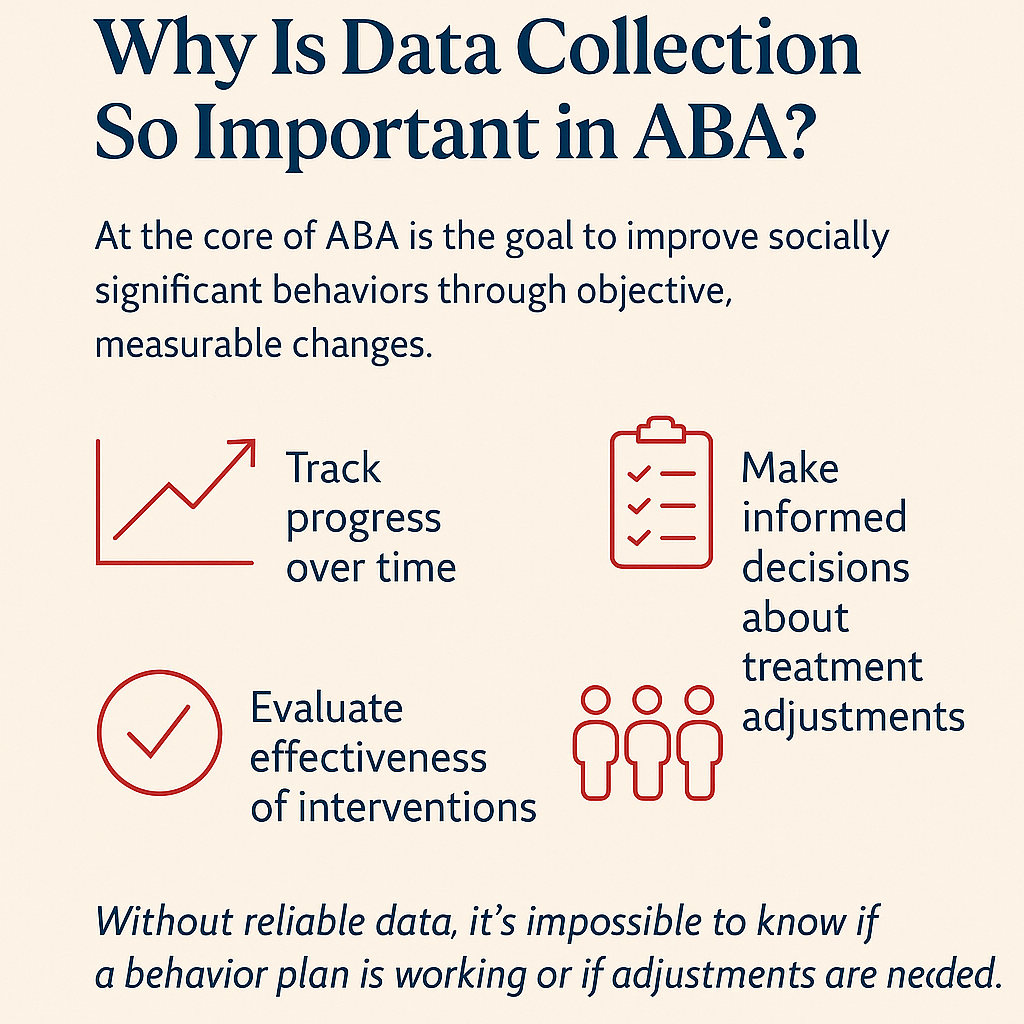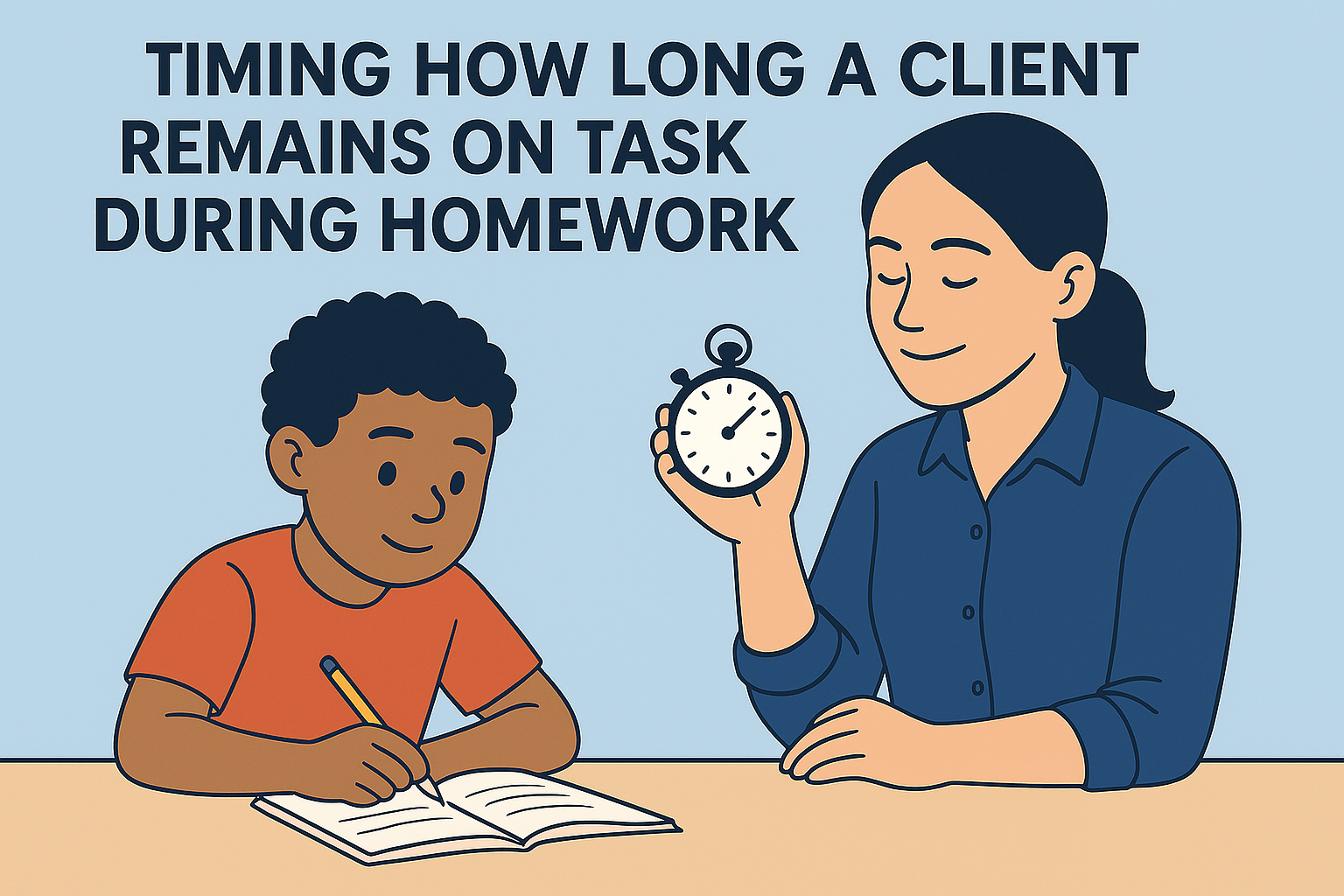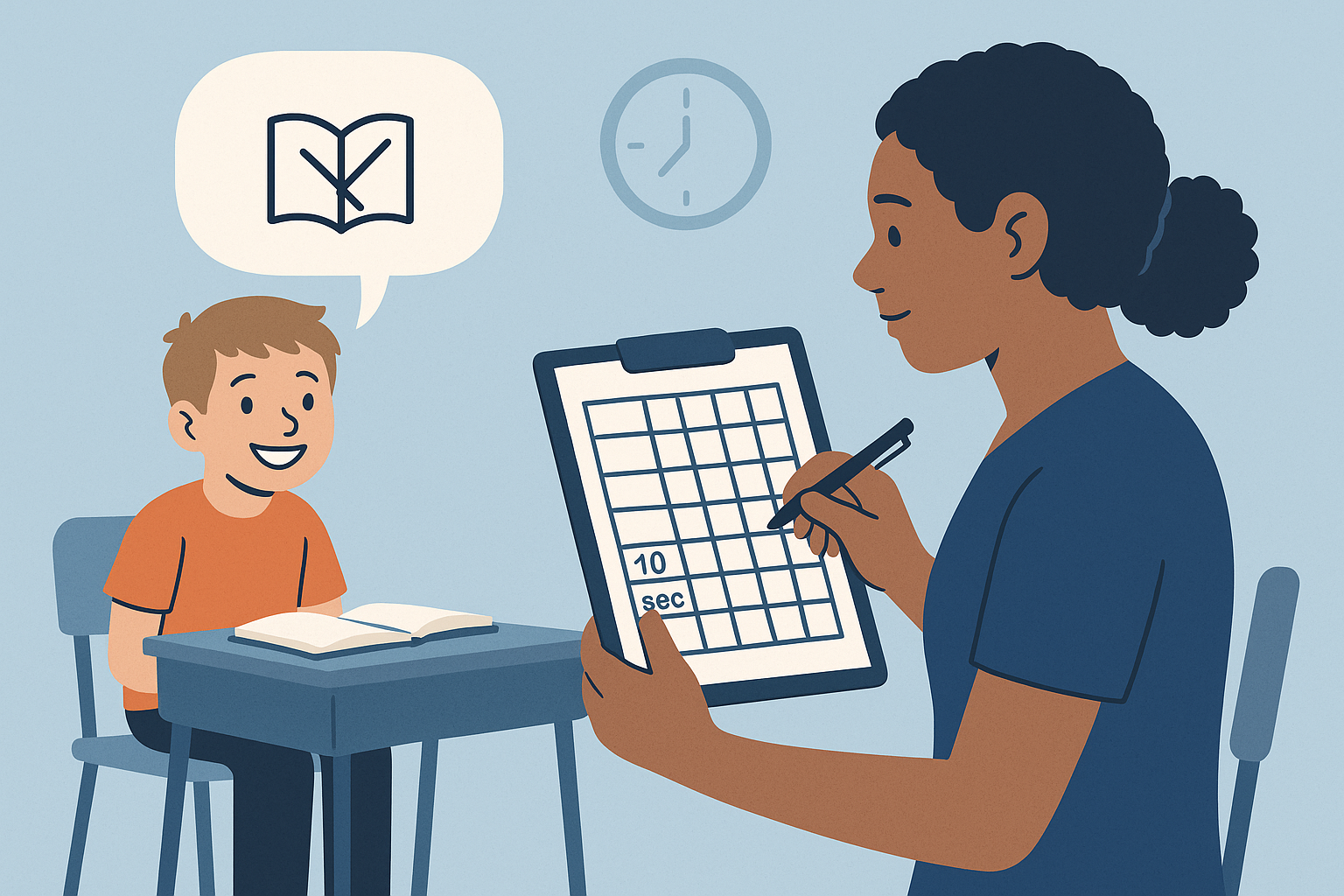Get ready to dive into one of the most important—and exciting—parts of ABA! The data collection methods in this article are based on the brand-new ATCC RBT® 2026 40-Hour Training Requirements and Curriculum. This updated curriculum—available exclusively at ATCC—covers everything you need to become an RBT®, with engaging lessons, real-world examples, and the most up-to-date training in the field.
Applied Behavior Analysis (ABA) is a science grounded in observation and measurement. For Registered Behavior Technicians (RBT®), Board Certified Behavior Analysts (BCBA®), and caregivers alike, accurate data collection is essential to designing effective interventions and tracking client progress. But with various data collection methods available, it can sometimes be confusing to know which method fits best in different situations.
Let's break down the most common ABA data collection methods, explain when and how to use each one, and provide practical examples to help clarify their applications. Whether you’re new to ABA or seeking to sharpen your data skills, this guide is for you.
Why Is Data Collection So Important in ABA?
At the core of ABA is the goal to improve socially significant behaviors through objective, measurable changes.
Data collection allows practitioners to:
- Track progress over time
- Make informed decisions about treatment adjustments
- Evaluate the effectiveness of interventions
- Maintain consistency across team members
Without reliable data, it’s impossible to know if a behavior plan is working or if adjustments are needed.

Essential ABA Data Collection Skills for New RBTs | RBT Test Content Outline (TCO) (3rd ed.)
Whether you’re preparing for the RBT® exam or just beginning your ABA journey, the methods outlined here are essential for passing the RBT exam and building lasting skills. With visual examples of ABA data collection, this resource supports learners who thrive on clarity and relevance. It’s part of the comprehensive ABA training trusted by professionals and built to empower both new technicians and experienced caregivers. If you're looking for confidence and competence in your data skills, this guide has everything you need to succeed.
Common ABA Data Collection Methods
Frequency (Event) Recording
Example: An RBT® counts how many times a child raises their hand during a 30-minute class session.

Duration Recording
When to use: For behaviors that vary in length and where how long they last matters (e.g., tantrums, time spent on task, crying episodes). Use duration recording to track behavior that happens for longer periods of time, but not very frequently.

Latency Recording
What it is: Measuring the time between a specific stimulus or instruction and the start of the behavior.
When to use: When the speed of response is important (e.g., time taken to start a task after a prompt). For behaviors where a delay in starting, could impact safety or effectiveness.
Example: Timing how long it takes a student to begin washing their hands after being asked.

Interresponse Time (IRT)

Partial Interval Recording
Note: This method tends to overestimate how much the behavior occurs because the behavior is marked as present even if it only happened briefly within the interval.

Whole Interval Recording

Momentary Time Sampling
What it is: Observing whether the behavior is occurring only at the very end of a predetermined time interval.
When to use: For behaviors that are difficult to track continuously or during long sessions. It's ideal when resources or time are limited, and an estimate is sufficient.
Example: Checking every 30 seconds if a client is engaged in on task-related behavior. The behavior only counts if it’s happening at the end of each 30-second interval, not before or after.
Note: This method provides an approximate picture of how often the behavior occurs, since it only records whether the behavior is happening at the end of each interval—not throughout.

Choosing the Right Method
The behavior’s characteristics: Is it discrete or continuous? Frequent or rare? Long lasting or happening over and over in short bursts?

Final Tips for RBT®s and ABA Practitioners
- Always ensure data collection is objective and consistent.
- Train all team members on the chosen data method for reliability.
- Use data to inform treatment decisions, not just to record.
- When in doubt, consult your supervising BCBA® or BACB® guidelines for guidance on the best data collection approach.
Conclusion
Whether you’re just starting your RBT® journey or looking to refine your skills, mastering these data collection techniques is an essential step toward delivering high-quality, evidence-based care.
